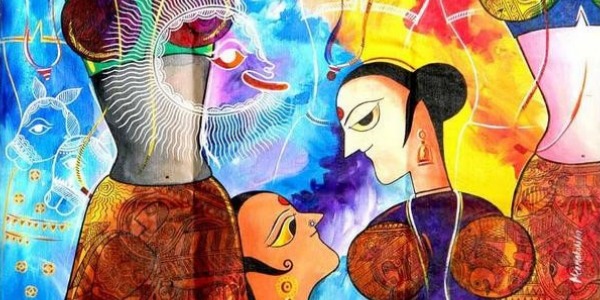Hijra culture, also known as the third gender or transgender community, has a rich and diverse history in India. Dating back to ancient times, the hijra community has been an integral part of Indian society, and has played a significant role in shaping its culture and traditions.
The term “hijra” refers to individuals who do not conform to traditional binary gender roles of male or female, and instead identify as a third gender. The hijra community has been recognized by Indian society for centuries, with references to the hijra community found in Hindu mythology, literature, and ancient texts.
In Hindu mythology, the god Aravan is said to have taken on the form of a hijra to marry Lord Krishna’s sister, Subhadra. Similarly, in the ancient Indian text Kama Sutra, hijras are mentioned as an accepted and respected part of society.
Despite this acceptance in ancient India, hijras have faced discrimination and marginalization in modern times. In the 19th century, the British colonial government criminalized hijra practices, and labeled them as “unnatural” and “criminal.” This led to the hijra community being pushed to the fringes of society, and forced to live in isolated communities on the outskirts of cities.
It was only in 2014 that the Indian Supreme Court recognized hijras as a third gender, and granted them legal recognition and protection under the law. However, even with this legal recognition, hijras continue to face discrimination and prejudice in many aspects of Indian society.
The depiction of hijra culture in popular media has played a significant role in shaping public perception of the community. One such portrayal is seen in the Indian television series “Shakti: Astitva Ke Ehsaas Ki,” which first aired in 2016. The series centers around the story of a young woman named Soumya, who is born intersex and raised as a hijra by the eunuchs in her community.
The show has been praised for its realistic portrayal of hijra culture, and for bringing attention to the struggles faced by members of the community. Through its depiction of Soumya’s experiences, the show sheds light on the discrimination and marginalization that hijras face in Indian society, as well as their struggles for acceptance and recognition.
One of the most notable aspects of the show’s portrayal of hijra culture is its depiction of the bond between members of the hijra community. The eunuchs in the show are shown as a close-knit community, who look out for and support one another in the face of discrimination and adversity. This portrayal is grounded in the reality of hijra culture, where community and support are integral to the lives of hijras.
Another aspect of the show’s portrayal of hijra culture is its depiction of the hijras as complex, multifaceted individuals. Rather than reducing them to one-dimensional stereotypes, the show presents hijras as individuals with their own hopes, dreams, and struggles. This humanization of the hijra community is a crucial step in combating the discrimination and marginalization they face in society.
In conclusion, the hijra community has a long and complex history in India, and their struggles for recognition and acceptance continue to this day. The portrayal of hijra culture in popular media, such as “Shakti: Astitva Ke Ehsaas Ki,” has played an important role in raising awareness of the community’s struggles and humanizing their experiences. By recognizing the complexity and diversity of hijra culture, we can work towards a more inclusive and accepting society for all individuals, regardless of their gender identity.
